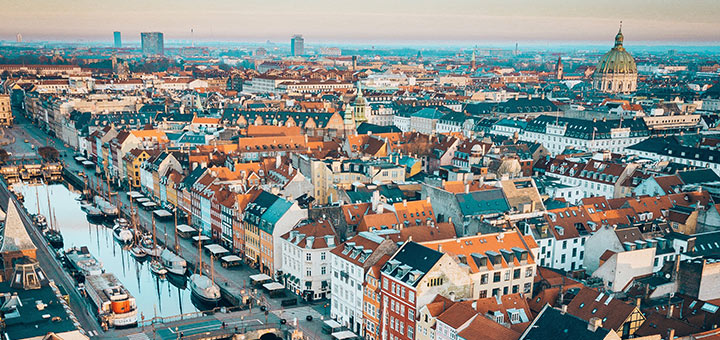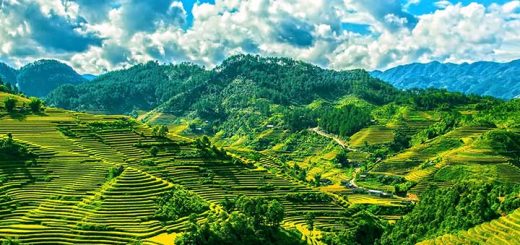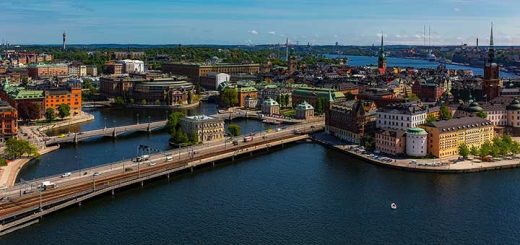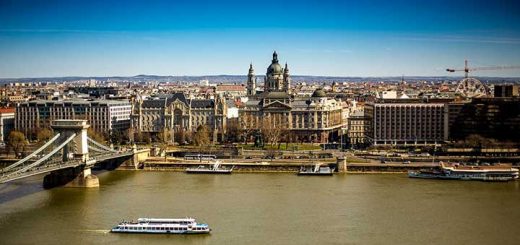Denmark Travel Guide

Started as this quirky, little-known, and even lesser understood cold country stretching its land between mainland Europe and the rest of the Scandinavia, Denmark has walked a long way to become the renowned tourist destination it is today. However, do not get fooled by the fact that the northern country attracts a lot of tourists nowadays because Denmark has definitely found a way to continue be the authentic, charming, and very quirky land perfectly developed agriculture, technological innovation, and all the unique landscapes and mythology in between.
Nowadays, Denmark is like a magnet for all sorts of tourists across the world, especially for foodies because it is home to not just one Michelin-starred restaurant. Food-wise, Denmark is a very thrilling and exciting place to visit. In fact, it will be almost impossible to find better butter, bacon, and beer than these served in the country. If this is not enough to satisfy your appetite for delicious and high-quality food do not miss to try the amazing cheeses and pastries too. But don’t expect the health-conscious people of Denmark to sit around all day feasting because, despite the delicious and fresh food, they will hop on their bikes and continue with their day.
The focus on green energy is something very big in this country with a developed economy and perfectly organised daily life. In fact, the eco-conscious way of living is so big right here that it has significantly influenced the culture in general, this is why you can expect to see it in architecture through impeccable and unique designs. The musical offerings (mainly jazz) at every corner add even more to the overall unique vibe of the country and its bigger cities. Do you need even more reasons to visit Denmark? Then what about the perfect infrastructure and ideal public transport? This is very important for tourists too!
What Danes are proud about is that they manage to preserve and respect their identity. Of course, people of Denmark are a part of this big melting pot of cultures and ethnicities the world is, however, they pride themselves with a unique and distinctive culture and national identity. The royal family of Denmark is somewhere in between an ancient fairytale and modern rock stars, cherished and loved by the nation. The Danish rejection of the euro and the reluctance to fully integrate with the EU is one more example that Danes can play as team members but they also would like to preserve their identity, uniqueness, and individualism. Denmark may be this small and rural European country at first but just take your time to consider its past of a leading European power once controlling the majority of northern Europe and Greenland, its former colony. In a nutshell, Denmark has definitely long punched above its weight.
In a geographical context, the country is divided into three main landmasses – the islands of Zealand and Funen and the peninsula Jutland extending northwards from neighbouring Germany. The majority of the visitors end up visiting Zealand because the country’s capital Copenhagen is located there. Copenhagen is definitely a rewarding experience. The big city lacks the hassle and stress of many other cosmopolitan spots dotted on the world’s map. This exciting city with a beautiful and organised old city centre, a spectacular array of museums, and a thriving nightlife is definitely a must-visit when heading to Denmark. Funen is mainly known for one particular spot and this is the birthplace of the author Hans Christian Andersen Odense. However, there is more to explore in Funen with all its tranquil and enjoyable beaches and small atmospheric villages. Jutland is where two of the most interesting Danish cities are located – Arhus and Aalborg. The lonely magical beaches, the gentle hills, and heathland are additional little joys to visit when in Jutland.
When to go?
In case you fancy some Scandinavian vibe, you will be pleasantly surprised to find out that out of the whole Scandinavian region, Denmark has the mildest and least extreme climate. Temperatures vary little across the country, however, the closer you get to the sea, the more freezing wind you can expect. In particular, the stiff breezes along Jutland’s west coast are not for the people fans of the African climate. However, a warm coat and a scarf can always save you from freezing out while exploring this beautiful part of the world. Rainfall levels are the other constant element of the Danish climate throughout the year. However, the west tends to be a bit more wetter than the east. Spring in Denmark brings some bright days and clear skies, however, the best time to visit the country is in summer when the climate in the country is at its warmest and the landscape is at its prettiest.
In summertime tourist facilities and transport services are operating at full steam too. The warmest month is July with an average temperature of 20 degrees Celsius. July is also a vacation month for the Danes who head to the countryside to enjoy some relaxation. In general, summers in the country are almost always sunny and clear. Autumn, despite a bit chilly, is also a great time to visit the country because of the breathtaking and jaw-dropping autumnal views surrounding you in the countryside. However, from mid-September onwards is the beginning of the low season in the country so keep in mind the reduced operating hours of the tourist facilities and most of the sights. The chilly breeze in the coastal areas is something you don’t want to underestimate too. However, if a bit of cold is really not bothering you, you can spend some time in Denmark during the winter too. Winters in the country may be pretty cold but never as severe as those of the northerly Scandinavian neighbours.
Where to go?
Copenhagen is definitely one of Europe’s most hip, energetic, attractive, visitor-friendly, and trendy capitals. It is one of the most beautiful too, split by lakes and surrounded by the sea. Copenhagen has a unique atmosphere and vibe, indeed, with it’s very welcoming and friendly to pedestrians and cyclists centre and emphasis of café culture, top-notch museums, thriving nightlife, and amazing bar and club scene. The city is also a host to many wonderful music festivals. The city is also graced with some spectacular castles, historical and cultural buildings. Some of the main attractions in Copenhagen include the amusement park Tivoli, the premier shopping area Indre By, the observatory Rundetaarn, the Botanisk Have (Botanical Garden), the Statens Museum of Kunst (National Gallery), Den Hirschsprungske Samling (The Hirschsprung Collection), the “free city” of Christiania, the area of Norrebro and its amazing cafes, bars, and restaurants and the Assistens Kirkegard cemetery with Hans Christian Andersen as a permanent resident, the classical and modern art gallery Ny Carlsberg Glyptotek, the districts Nyhavn, Frederiksstaden that is a home to four palaces, the marble dome Frederikskirken, the bronze statue of the Little Mermaid that is the symbol of the city that can be observed from the harbour, the red-light district Vesterbro, the national Thorvaldsens Museum, the city’s oldest public park Kongens Have with the fairytale castle Rosenborg Slot, the copper and golden spire of Vor Frelsers Kirke and the canalside Dansk Arkitektur Center in the Christianshavn district, the Carlsberg Visitors Center.
In the rest of Zealand, there is much more to be explored too, including the site of the legendary Kronborg Castle Helsingor, the extravagant cathedral Roskilde, the little fishing village Gilleleje. Funen is the other Danish island that can offer amazing strolls in the atmospheric little fishing villages of the country and also Funen is home to the infamous Odense city.
Head to Jutland to explore Denmark’s second city Arhus and the capital of northern Jutland Aalborg. Both cities are very vibrant and energetic, with cosmopolitan urban centres and dramatic landscapes surrounding them.
Essentials
• The currency of Denmark is the Danish krone
• The main airport Kastrup Airport is located near Copenhagen
• Copenhagen’s Central Station is yet another convenient connection for visitors coming from Germany and Sweden
• The regional airports at Aalborg, Arhus, and Billund handle a number of budget flights
• Denmark has a very easy-to-use and convenient public transport system
• Cycling is a popular way of transportation in the country
• Accommodation in the country is a major expense despite the wide network of good-quality hostels in the country
• Traditional Danish food includes a lot of meat or fish and veg combos. Specialities worth trying include the classic smoked herring and the thinly sliced pork with boiled potatoes and parsley sauce. The traditional lunch is slices of rye bread heaped with meat, fish or cheese, and assorted trimmings.
• The defining aspect of the Danish culture is hygge or the almost magical ritual of spending quality time with friends and family over good food and drink and in a cosy setting.
• Tipping is not expected and service charges are included in the hotel, restaurant, and bar bills.
• Smoking is banned in restaurants, cafes, and bars.



